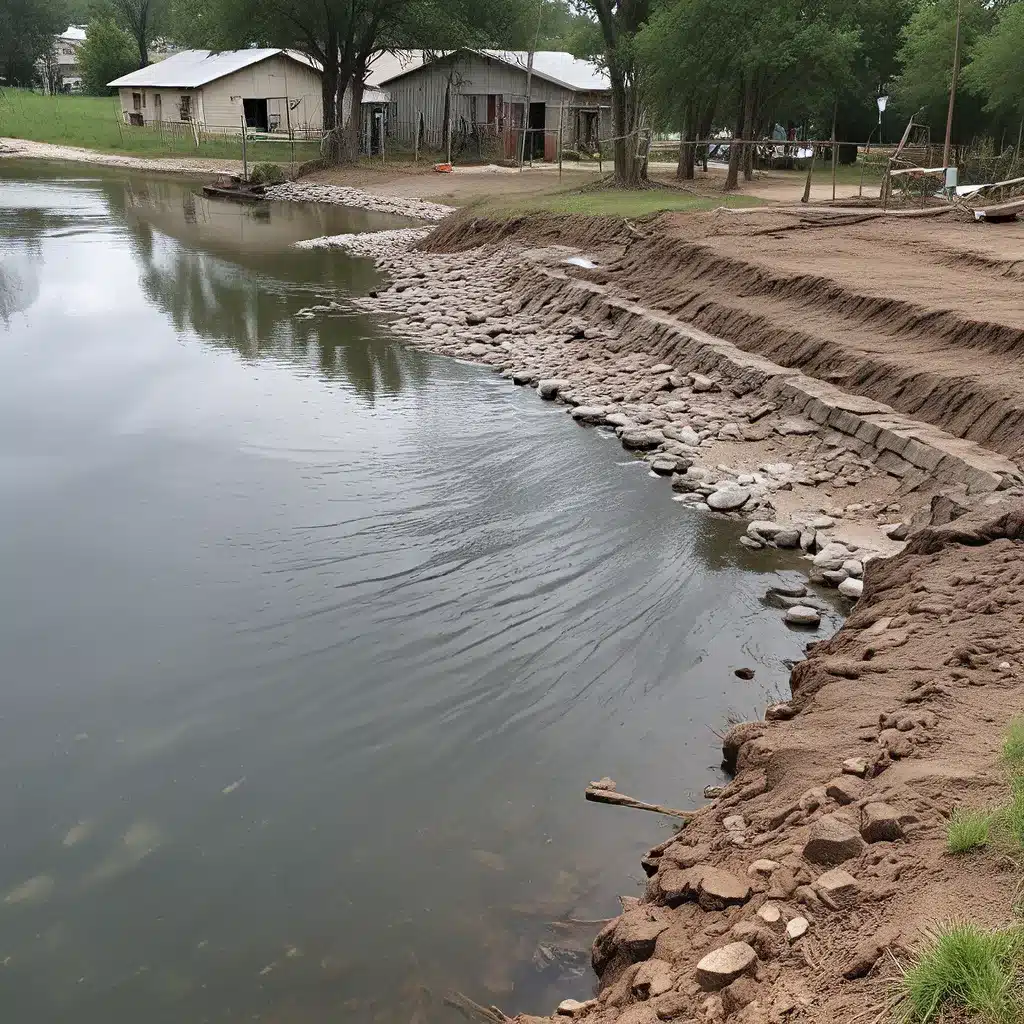
As I stood knee-deep in the rapidly rising floodwaters, my heart raced with a mix of adrenaline and determination. The community I called home was facing a crisis, and the stakes had never been higher. But in that moment, I knew that our years of careful water management planning were about to pay off in a big way.
You see, water emergencies can strike without warning, leaving communities and organizations scrambling to respond effectively. From severe storms and natural disasters to infrastructure failures and environmental contamination, the ability to manage water resources during a crisis can make all the difference. And that’s exactly what I’m here to explore – the liquid legacies of water management practices that empower emergency response.
Preparedness: The Keystone of Resilience
I’ll never forget the lessons I learned during my time working with the local water utility. Back then, it seemed like a never-ending cycle of permits, regulations, and technical jargon. But looking back, I realize that those mundane tasks were actually the foundation for something much more powerful – preparedness.
Studies have shown that communities with robust water management plans are far more equipped to handle emergencies. From mapping critical infrastructure to maintaining redundant systems, the groundwork laid during calm times can make all the difference when the storm clouds gather.
As I waded through the rising floodwaters, I couldn’t help but appreciate the foresight of my colleagues. The intricate network of valves, pipes, and storage tanks that we had painstakingly mapped and maintained were now our lifeline. By understanding the ebb and flow of our community’s water systems, we were able to quickly divert resources, redirect critical supplies, and ensure that essential services remained operational.
Collaboration: The Lifeblood of Resilience
But preparedness is only half the battle. Collaboration is the lifeblood of true resilience, and that’s a lesson I learned the hard way.
During a particularly devastating drought, our water utility found itself at odds with neighboring municipalities. We were each vying for a limited resource, and the tension was palpable. It wasn’t until we set aside our differences and started working together that we realized the true power of collective action.
As the Pennsylvania legislature recognized, fostering cross-jurisdictional collaboration is essential for effective water management. By aligning our emergency response plans, sharing critical data, and coordinating our efforts, we were able to weather the drought with minimal disruption to our communities.
Now, as I watched the floodwaters rise, I marveled at the seamless coordination between our utility, local emergency responders, and regional agencies. The lines of communication were open, the data was flowing, and everyone was working towards a common goal – to protect the people and resources we held dear.
Adaptability: The Hallmark of Resilience
But even the best-laid plans can be thrown into disarray by the unpredictable nature of water emergencies. That’s where adaptability comes into play – the ability to pivot, adjust, and innovate on the fly.
As the experts at IDC have noted, the role of a water manager has never been more demanding. From managing complex systems to navigating ever-changing regulations, the ability to think on your feet is essential.
As the floodwaters continued to rise, our team put this principle into action. We quickly deployed our portable pumps and leveraged real-time data to identify weaknesses in our infrastructure. When a critical valve failed, we were able to reroute the flow and maintain service to the most vulnerable areas.
But adaptability isn’t just about technical prowess – it’s also about fostering a culture of innovation. By encouraging our team to think creatively, we were able to come up with novel solutions that defied conventional wisdom. From repurposing agricultural equipment to harnessing the power of renewable energy, our ability to think outside the box was the key to our success.
The Liquid Legacy of Water Management
As the sun began to set and the floodwaters slowly receded, I couldn’t help but feel a deep sense of pride. The liquid legacies we had built through years of careful planning, collaboration, and adaptability had not only saved our community, but they had also set the stage for a more resilient future.
Sure, there were challenges and setbacks along the way. But by embracing the principles of preparedness, collaboration, and adaptability, we had transformed our water management practices into a powerful tool for emergency response. And in doing so, we had not only protected our most precious resource, but we had also empowered our community to weather any storm that came our way.
So, the next time you turn on your tap or flush your toilet, remember the liquid legacies that lie beneath the surface. Because in the end, the true value of water management isn’t just about keeping the taps flowing – it’s about building a legacy of resilience that can withstand even the mightiest of floods.


